Special Report
These Wild Animals Are Disappearing at an Alarming Rate -- Here’s What You Can Do About It
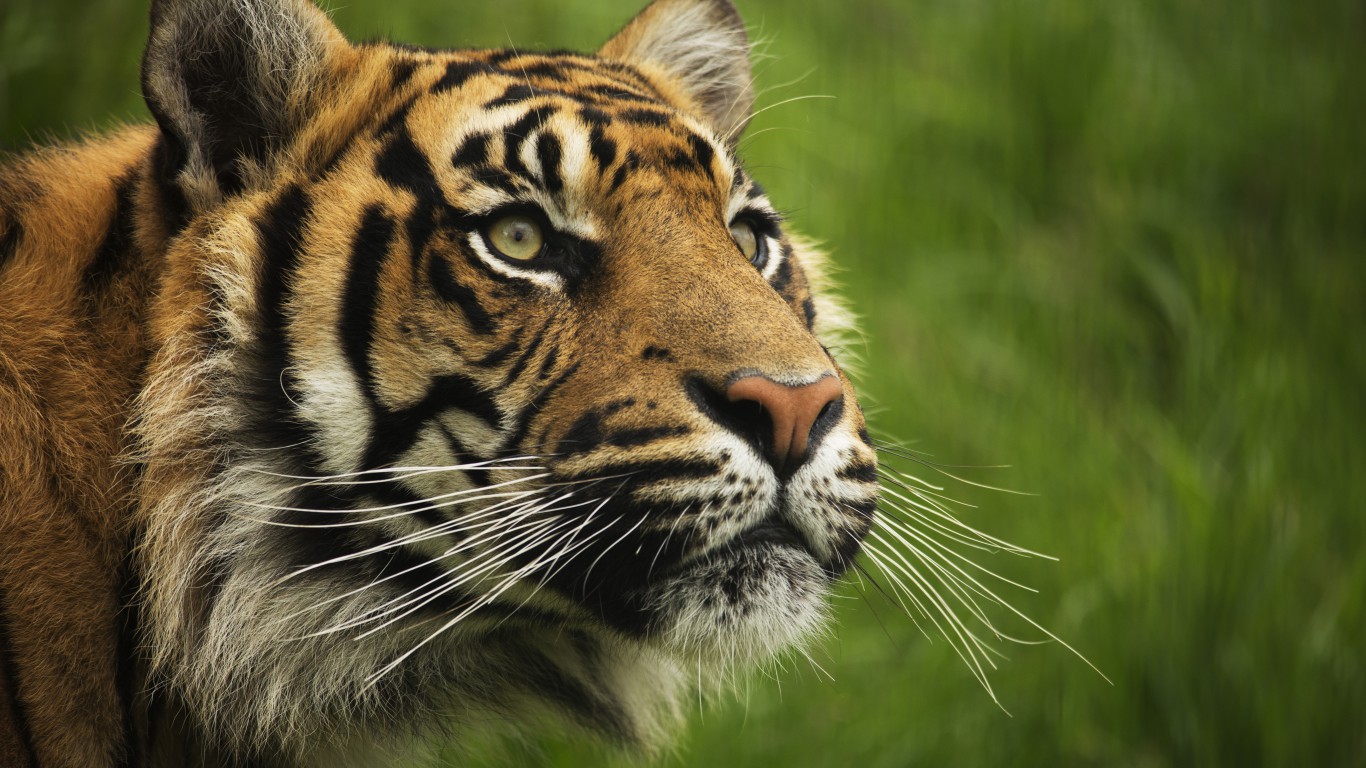
Published:
Last Updated:

In terms of time, humans have inhabited the Earth for a fairly short period. Over this time, people have domesticated livestock, learned to farm, and forged the Industrial Revolution.
All of these developments have lifted people’s living standards and dramatically increased the human population. Yet all of these innovations have come at the expense of the natural world. Here are the animals humans are driving to extinction. The International Union for Conservation of Nature (IUCN), which has assesses more than 105,000 species in terms of threat levels, has determined that about 28,000 species are threatened.
Animals in the wild are vanishing quickly, raising a clarion call to address the threat to at-risk species. 24/7 Wall St. has created a list of wild animals disappearing at an alarming rate, drawing on information from the IUCN and the World Wide Fund to compile the list.
Included on our list are frogs, toads, sharks, turtles, tigers, and elephants. While most of these species’ numbers are declining, some have rebounded, a testament to the commitment of conservationists and the changing attitudes and greater awareness of people in general about the plight of the creatures that share the planet with humankind. Here are 30 heroes fighting to save our oceans.
To create a list of wild animals that are disappearing at an alarming rate, 24/7 Tempo reviewed data from the International Union for Conservation of Nature and the World Wildlife Fund, which compile information on species threatened with extinction.
Click here to see wild animals that are disappearing at an alarming rate.
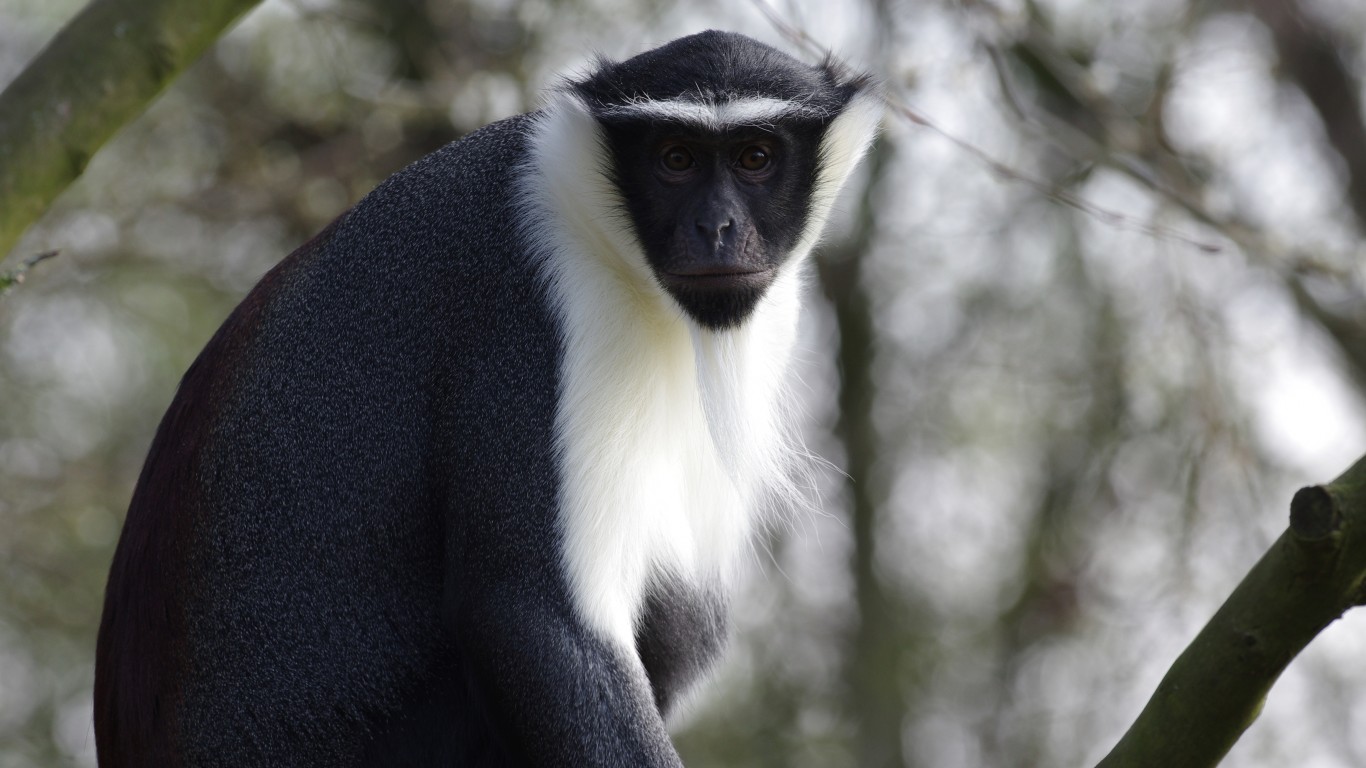
1. Roloway Monkey
> Estimated remaining population: Unknown (decreasing)
> Main habitat/geography: Ivory Coast, Ghana
> Scientific name: Cercopithecus roloway
Native to Ghana, the roloway monkey status changed from endangered a year ago to critically endangered in 2019. The monkeys are found in the country’s undisturbed forests and cannot adapt well to habitat changes. Ghana has lost 80% of its forested land over the last century, and there has been a decline in the population of the monkeys. The roloway monkeys are also hunted for bushmeat.
[in-text-ad]

Here’s what you can do about it
The Institute for Wildlife Studies in Arcata, California, a nonprofit organization, has conducted field studies of the endangered animal in Ghana. You can volunteer or provide support in other way.
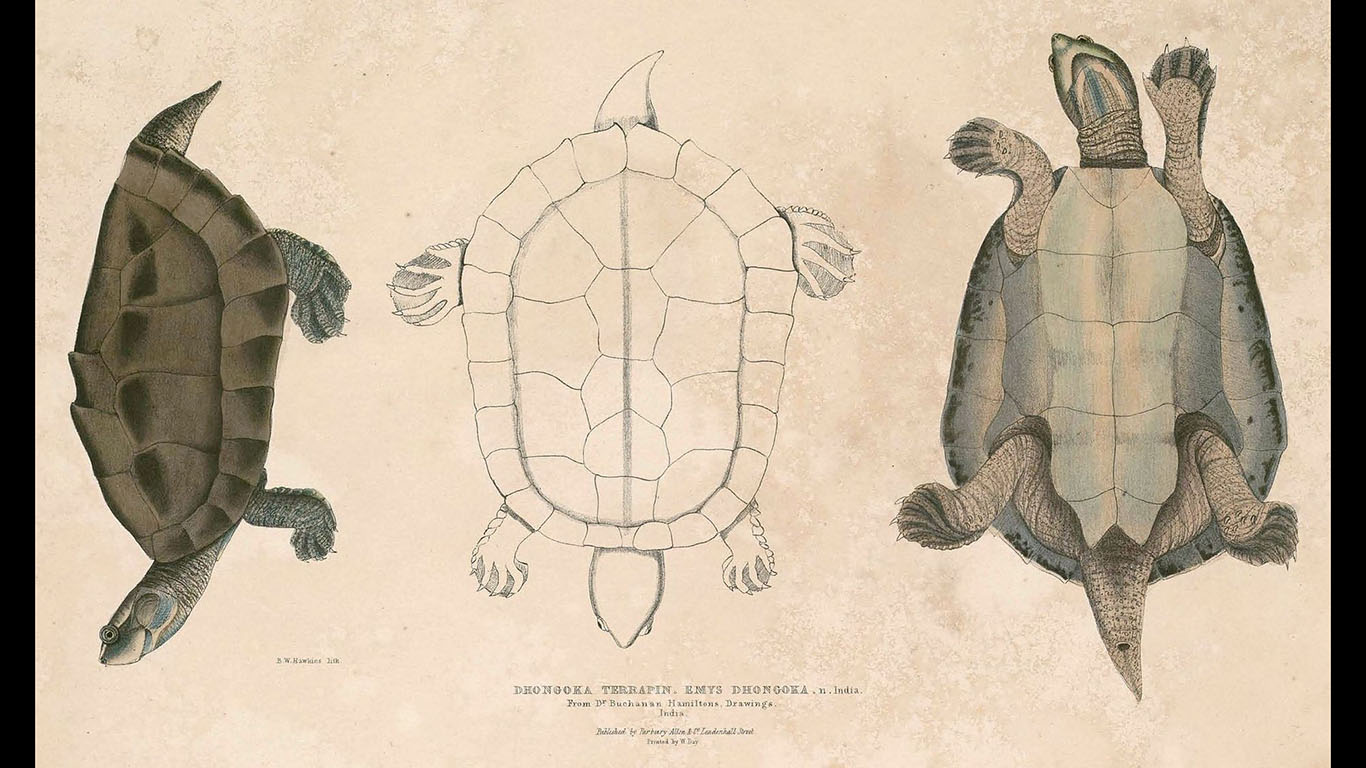
2. Three-Striped Roofed Turtle
> Estimated remaining population: Unknown (decreasing)
> Main habitat/geography: Northern India, Bangladesh
> Scientific name: Batagur dhongoka
The critically endangered three-striped roofed turtle lives in wetlands in Bangladesh, India, and Nepal. The turtle is facing overharvesting and habitat loss caused by pollution from urban waste water as well as water-extraction for agricultural projects and human consumption.
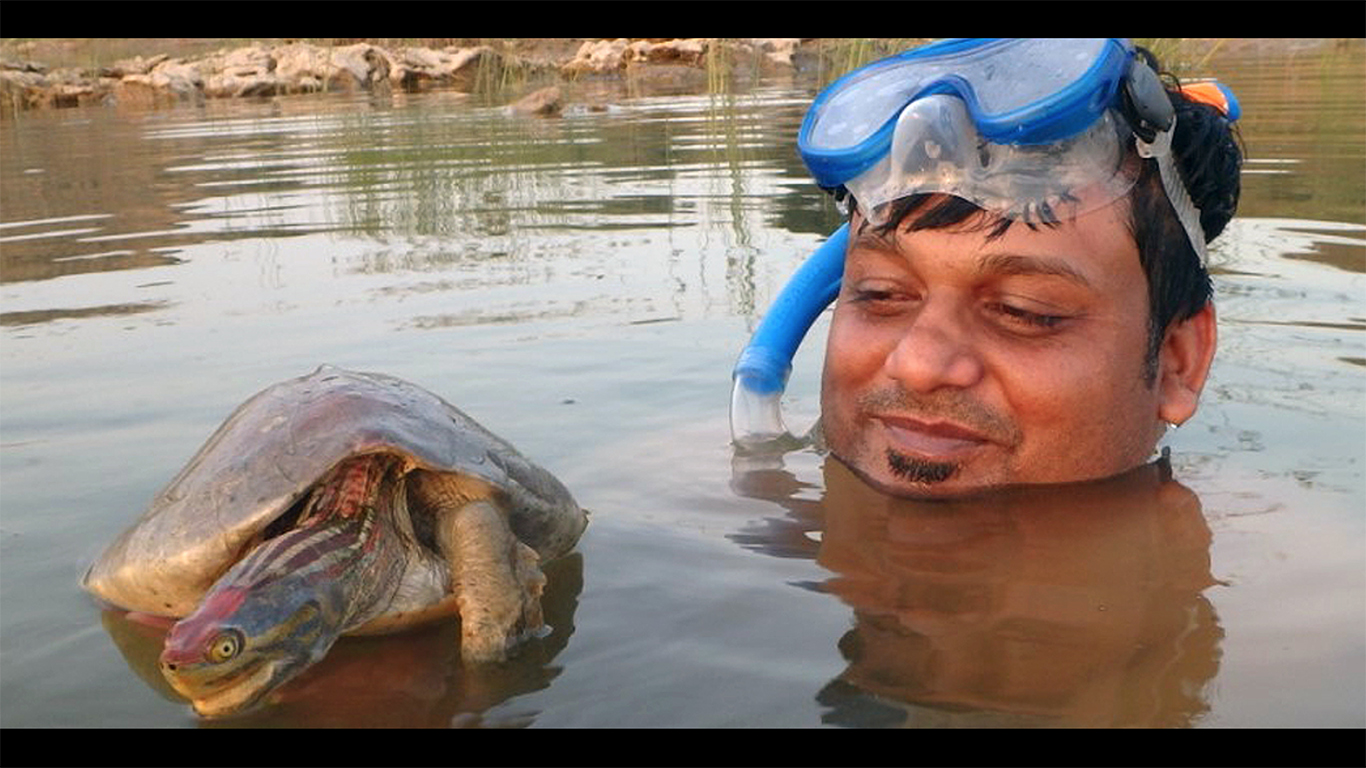
Here’s what you can do about it
People can make donations to the TSA/Centre for Wildlife Studies India Turtle Conservation Program, which has been focused on conserving this species in India’s Chambal River since 2006.
[in-text-ad-2]

3. Burmese Roofed Turtle
> Estimated remaining population: 10 (decreasing)
> Main habitat/geography: Myanmar
> Scientific name: Batagur trivittata
This turtle species is among the world’s most endangered and is classified by the International Union for Conservation of Nature (IUCN) as critically endangered. Only one wild population has been known to remain as of 2017 — in Myanmar. There are only 10 mature (breeding) individuals left in the world, according to the IUCN. The turtles are critically endangered because of overfishing and harvesting of their aquatic resources.
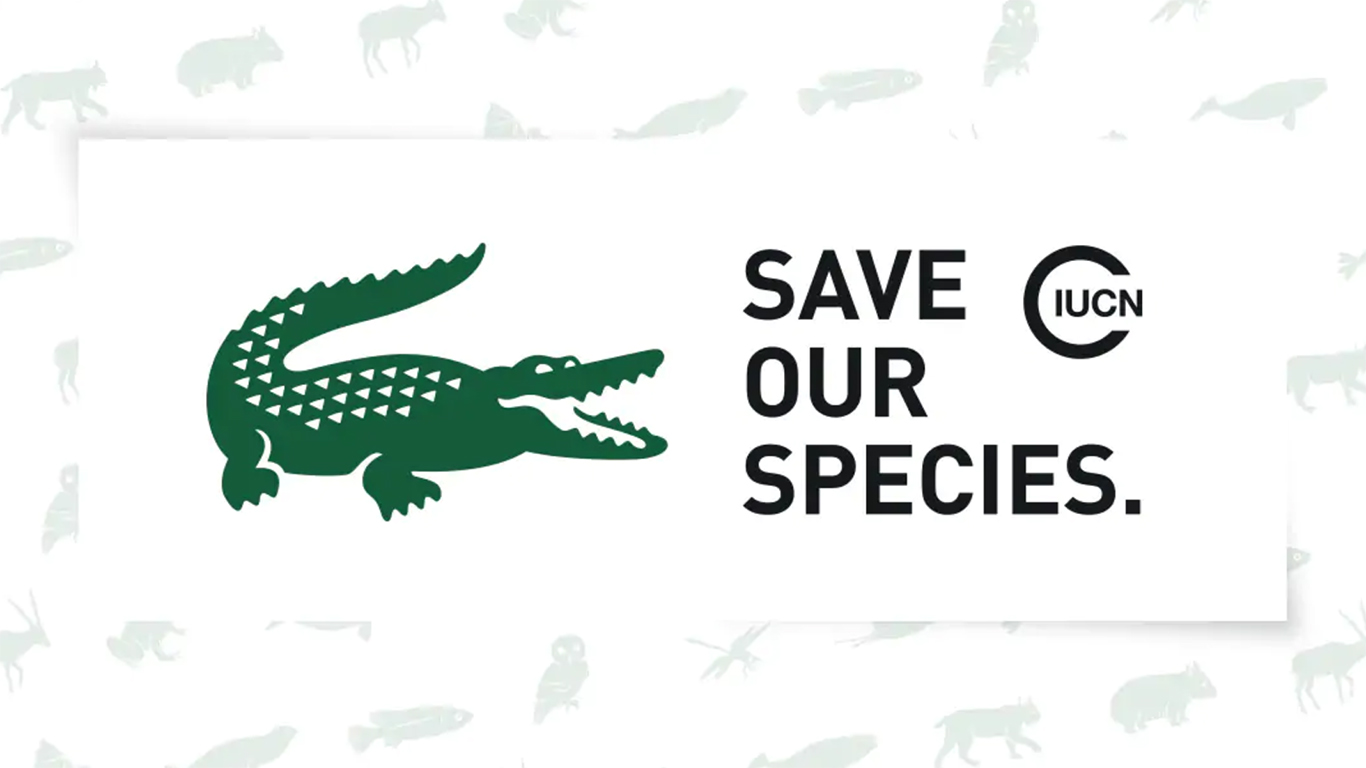
Here’s what you can do about it
Retailer Lacoste and the IUCN have partnered in a two-year project that includes supporting conservation efforts of the Burmese Roofed Turtle in Myanmar. The animal was featured in the #LacosteSaveOurSpecies campaign. Those interested can contribute to the campaign.
[in-text-ad]
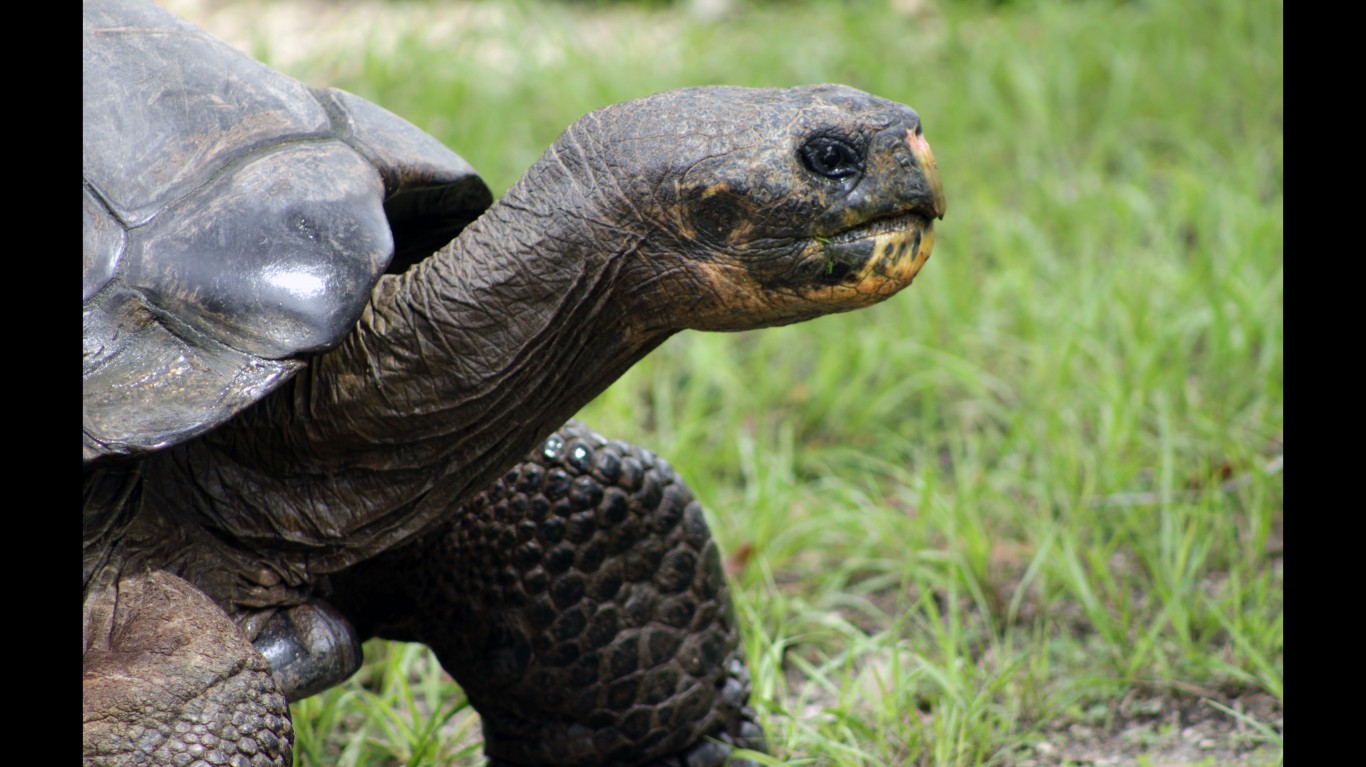
4. Elongated Tortoise
> Estimated remaining population: Unknown (decreasing)
> Main habitat/geography: India, Bangladesh, southeastern Asia
> Scientific name: Indotestudo elongata
Elongated tortoises are found in Bangladesh, India, and southeast Asia. The biggest threat to the tortoise is the pet trade, according to the World Wide Fund for Nature. The tortoises are hunted for food and found in Asian food markets.

Here’s what you can do about it
Pressure elected officials in the United States to exert influence on countries in Asia where the tortoise lives — Bangladesh, India, and southeast Asia — to enforce wildlife protection laws, continue conservation breeding, and continue research.

5. Pancake Tortoise
> Estimated remaining population: Unknown (decreasing)
> Main habitat/geography: Kenya; Tanzania, Zambia
>Scientific name: Malacochersus tornieri
In one year, the pancake tortoise’s status went from vulnerable to critically endangered, according to the IUCN. The tortoise gets its name from its flattened shell. They can crawl and live into narrow rock crevices and are considered good climbers. People hunt the pancake tortoise for pet trade, and they were critically threatened until their exports were closely regulated.
[in-text-ad-2]
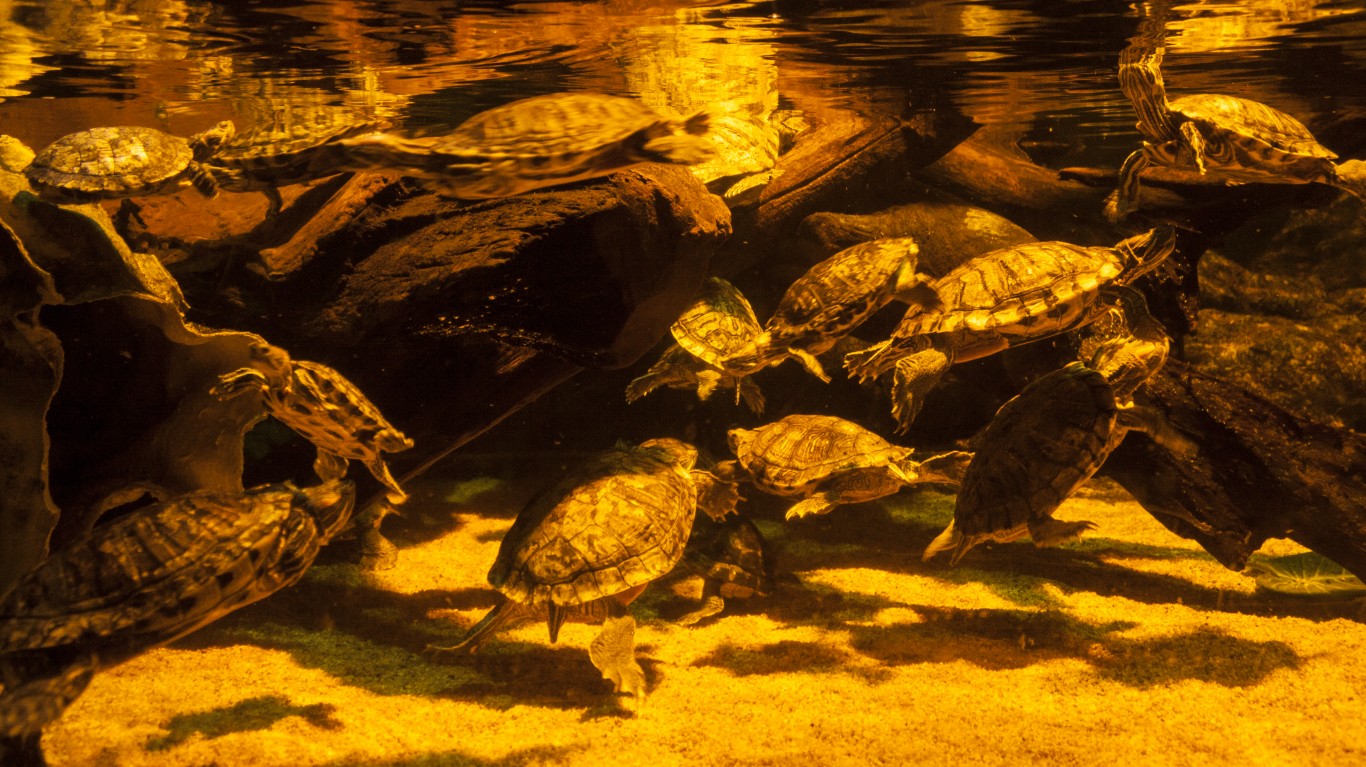
Here’s what you can do about it
Those seeking to have a pancake tortoise as a pet are advised to buy captive-bred tortoises. If more people buy captive-bred tortoises, more people will breed them to sell, and this will help preserve the population of the animal.

6. Asian Giant Tortoise
> Estimated remaining population: Unknown (decreasing)
> Main habitat/geography: Malaysia, Bangladesh, Indonesia, India,Thailand
> Scientific name: Manouria emys
The Asian giant tortoise lives in several countries in Southeast Asia. The tortoises live in moist tropical forests with temperature preferably between 55 and 85 degrees Fahrenheit, which makes them vulnerable to droughts. The tortoise has become critically endangered because it is being hunted for food and folk medicine and because of habitat destruction.
[in-text-ad]

Here’s what you can do about it
Concerned people can donate to the Turtle Survival Alliance in Charleston, South Carolina. This organization has partnered with the Creative Conservation Alliance and the Bangladesh Forest Department, which have succeeded in captive reproduction of the animal in Bangladesh and the hatchlings are being cared for at the CCA’s Turtle Conservation Center in Bangladesh.
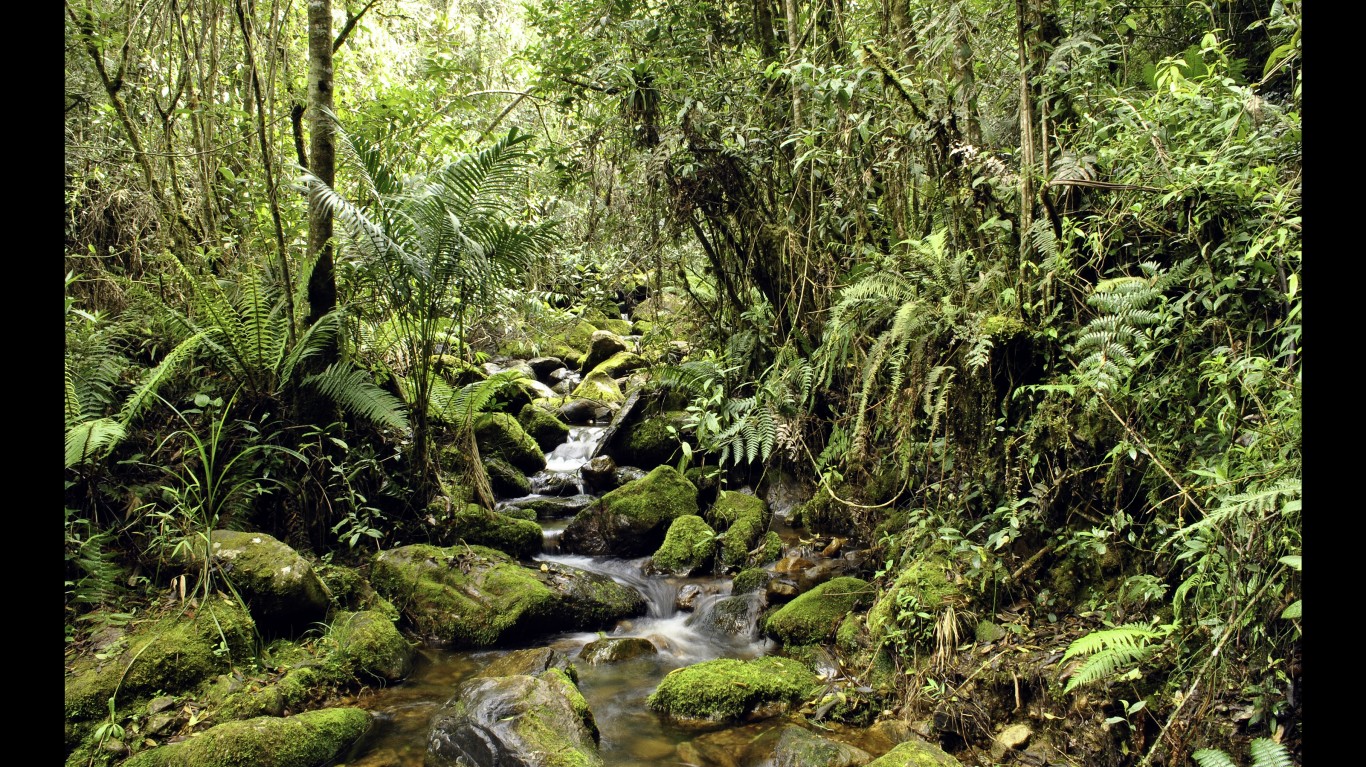
7. La Planada Poison Frog
> Estimated remaining population: Unknown (decreasing)
> Main habitat/geography: Colombia
> Scientific name: Ameerega andina
The la planada poison frog’s natural habitats are subtropical or tropical moist forests and rivers. Threats to the frog include deforestation and droughts, which are reducing its natural habitat.
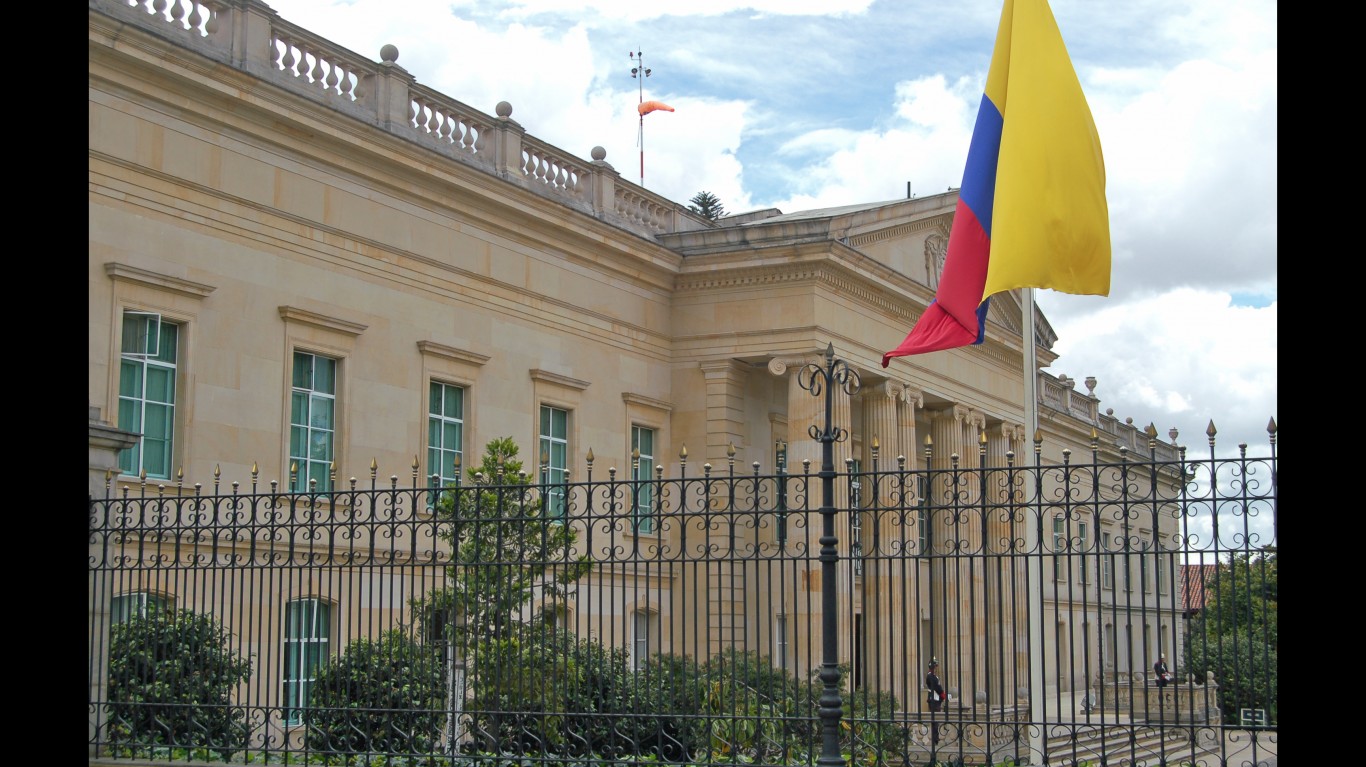
Here’s what you can do about it
Exert pressure on American elected officials to press Colombia to reduce deforestation efforts.
[in-text-ad-2]
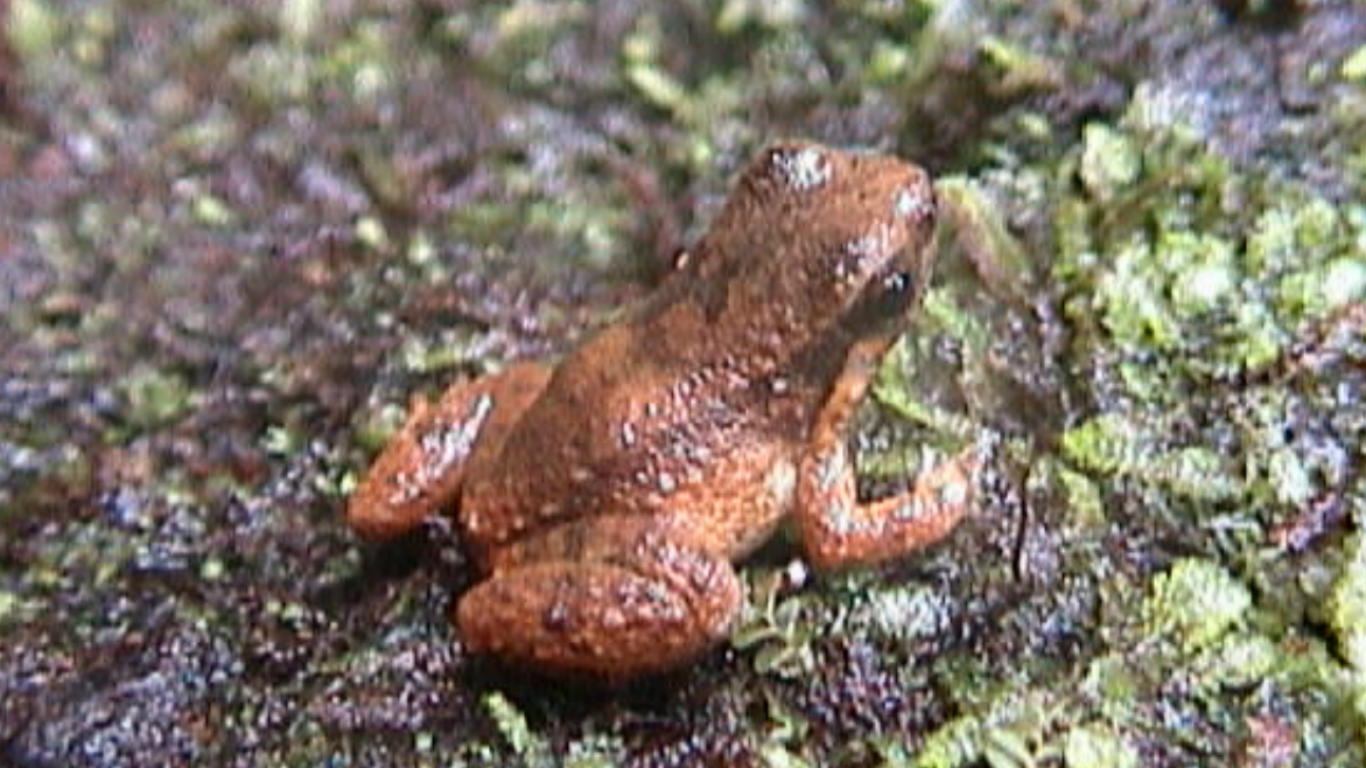
8. Degranville’s Rocket Frog
> Estimated remaining population: Up to 49 (decreasing)
> Main habitat/geography: French Guiana
> Scientific name: Anomaloglossus degranvillei
The IUCN changed the Degranville’s rocket frog classification this year to critically endangered from least concern in 2018. The rocket frog is named after botanist Jean-Jacques de Granville. Energy production, illegal gold mining, and climate change are the biggest threats to the frog.

Here’s what you can do about it
Start a petition protesting the practice of illegal gold mining to pressure officials in French Guiana and make them aware of the threat to Degranville’s Rocket Frog.
[in-text-ad]
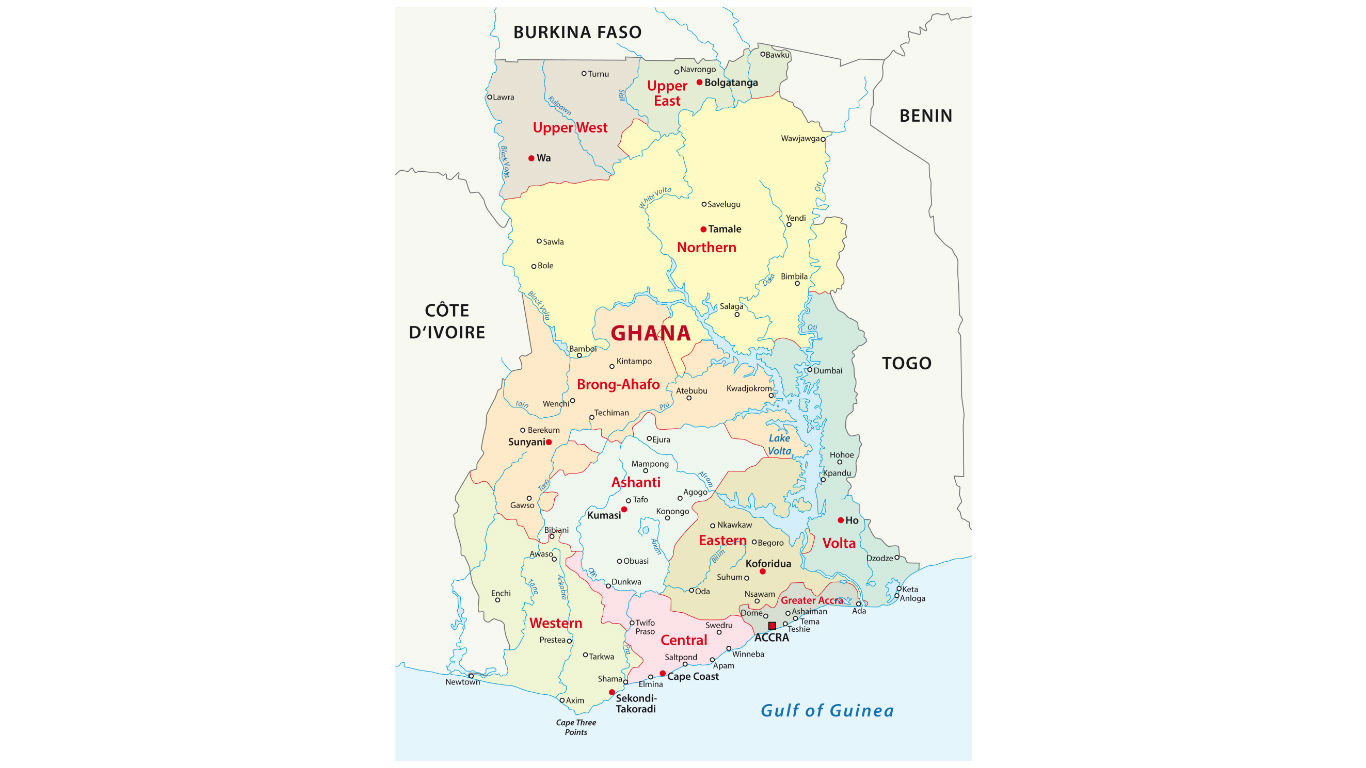
9. Krokosua Squeaking Frog
> Estimated remaining population: Up to 249 (decreasing)
> Main habitat/geography: Ghana, Guinea
> Scientific name: Arthroleptis krokosua
The Krokosua squeaking frog survives in several reserves across Ghana and Guinea. The vegetation of Ghanaian reserves has been disturbed by logging activities, farming, mining, and illegal plantations, imperiling the Krokosua squeaking frog. Wildfires also have destroyed the frog’s’ habitat, and an aggressive invasive weed threatens its existence.

Here’s what you can do about it
Encourage the government of Ghana to increase funding to accelerate the removal of the invasive “devil weed.” Ghana’s Department of Wildlife and Range Management has created a program called “Save the Frogs! Ghana” to address the issue. The department is also doing more advocacy to protect the habitat from further logging, agriculture, and mining.
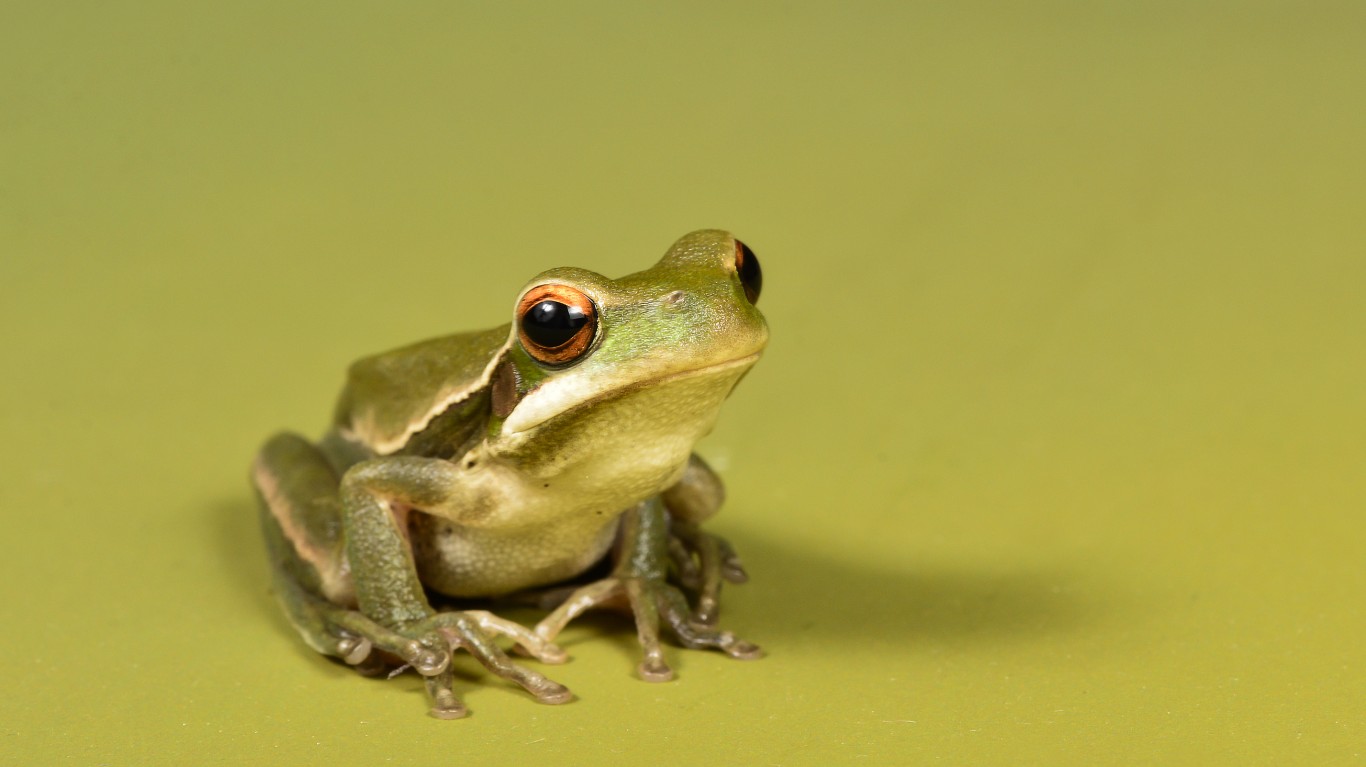
10. Patagonia Frog
> Estimated remaining population: Unknown (increasing)
> Main habitat/geography: Ghana, Guinea
> Scientific name: Atelognathus patagonicus
As the name might indicate, the Patagonia frog is native to Argentina. The main threat to the frog is reduction of its natural habitat â wetlands, shrubland, and grassland. This is caused by livestock drinking from the lagoons and grazing on the aquatic vegetation, which the frog depends on. The introduction of invasive predatory fish has also depopulated the frog.
[in-text-ad-2]
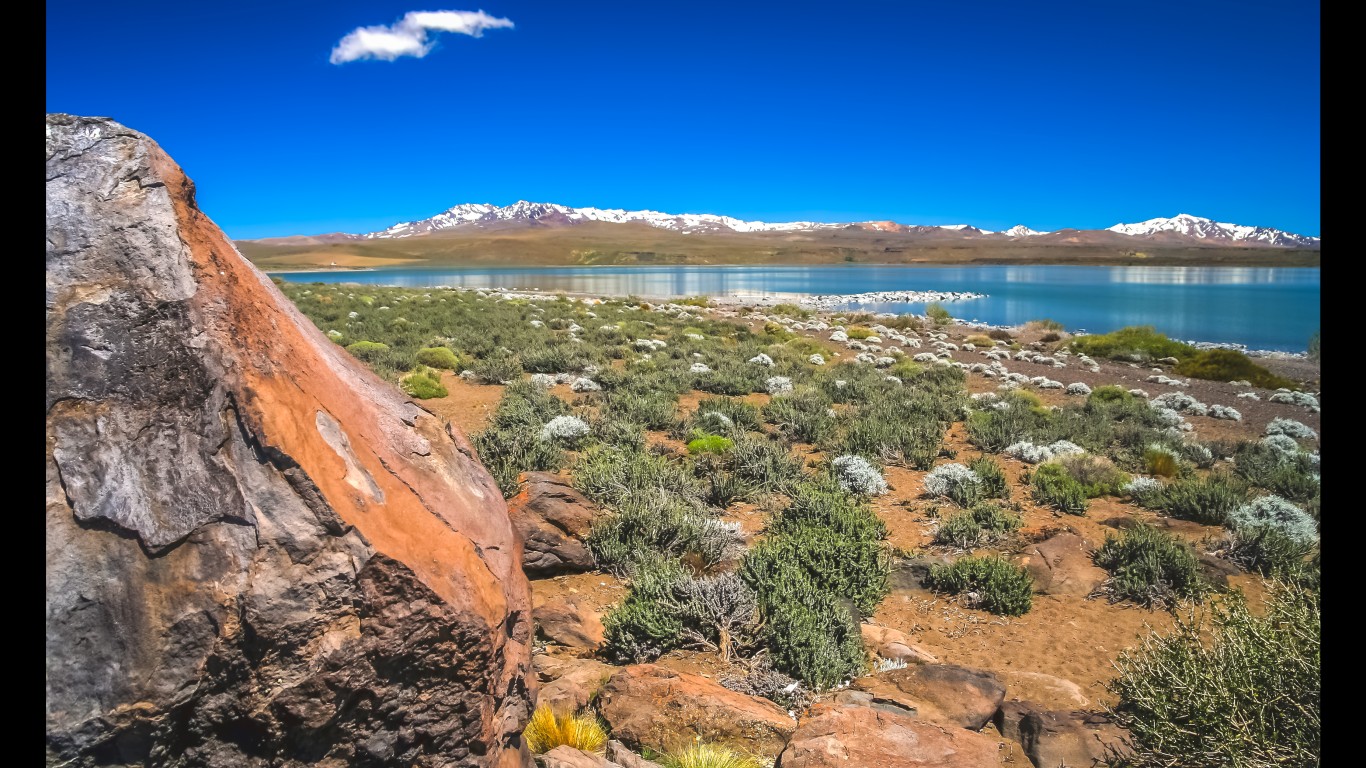
Here’s what you can do about it
People can help protect the Patagonia frog by supporting the efforts of the Argentine National Park Laguna Blanca that started in 2007 to reduce and control invasive fish at the White Lagoon in Argentina, one of the frog’s habitats. The Argentine agency is also building a survival colony for the frog before the species is reintroduced to the White Lagoon.

11. Pacific Marsupial Frog
> Estimated remaining population: Up to 49 (decreasing)
> Main habitat/geography: Northwestern Ecuador, western Colombia
> Scientific name: Gastrotheca angustifrons
The Pacific marsupial frog is another species that has gone from a relative lower threat level of vulnerable to critically endangered — and even possibly extinct — in just one year, according to the IUCN. The biggest risks to the frog are illegal crops, logging, and mining activities, all of which have led to significant loss of habitat.
[in-text-ad]
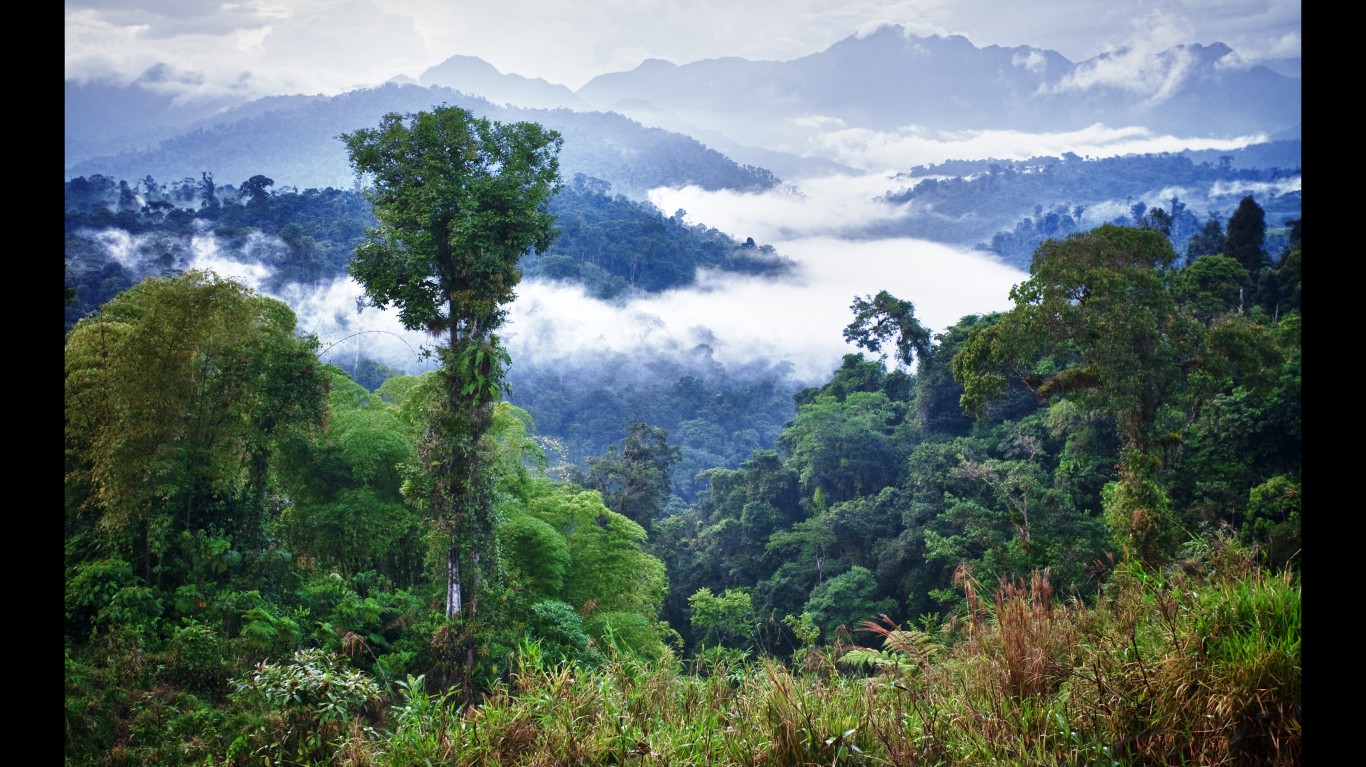
Here’s what you can do about it
Pressure the governments of Ecuador and Colombia to improve the protection of forest habitats where the species exists, particularly in Chocó-Darién forests of western Ecuador.
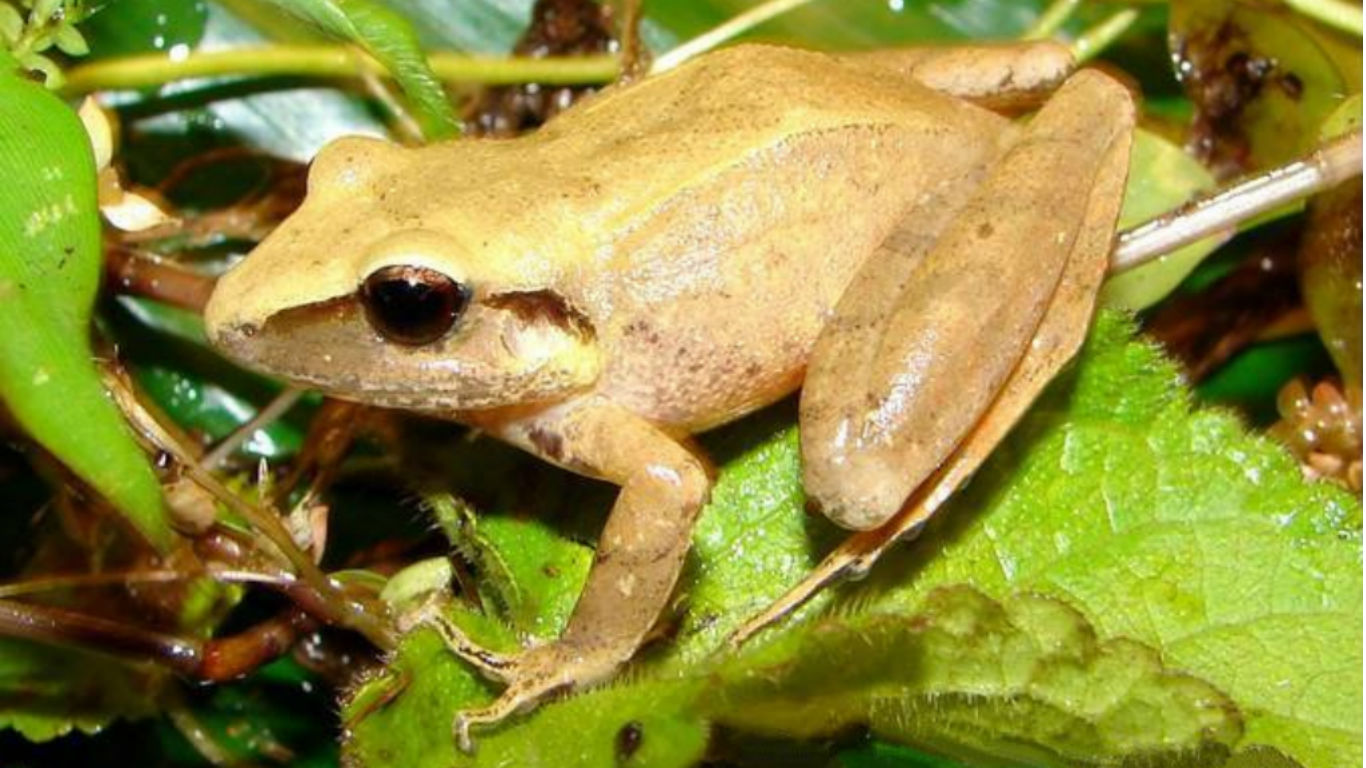
12. Cacao Robber Frog
> Estimated remaining population: Up to 49 (decreasing)
> Main habitat/geography: Colombia
> Scientific name: Pristimantis cacao
Pristimantis cacao is a large genus of frogs found in the southern Caribbean and Central and South America. The cacao robber frog, in particular, is endemic to Colombia. A major threat to the frog’s survival is the planting of illegal crops that lead to a loss of habitat.

Here’s what you can do about it
The cacao robber frog is known to inhabit the Parque Nacional Natural Munchique in Colombia. However, conservation efforts are needed to protect the creature in the wild, and the Colombian authorities need to be made aware of the threat of loss of habitat.
[in-text-ad]

13. Tandayapa Andes Toad
>Estimated remaining population: Unknown (decreasing)
>Main habitat/geography: Ecuador
>Scientific name: Rhaebo olallai
The Tandayapa Andes toad was thought to have been lost since 1970. It was found in a very remote and difficult to explore area in Ecuador, “in a place the species hadn’t been found before,” according to the Global Wildlife Conservation. The area is just about 500 acres, but open-pit mines are destroying the area, threatening the species’ very existence.

Here’s what you can do about it
Those concerned about preserving the toad should express support for the Ecuadorian government’s program called Socio Bosque, which pays landowners to leave the forest intact. That is crucial to the preservation of the species.
[in-text-ad-2]
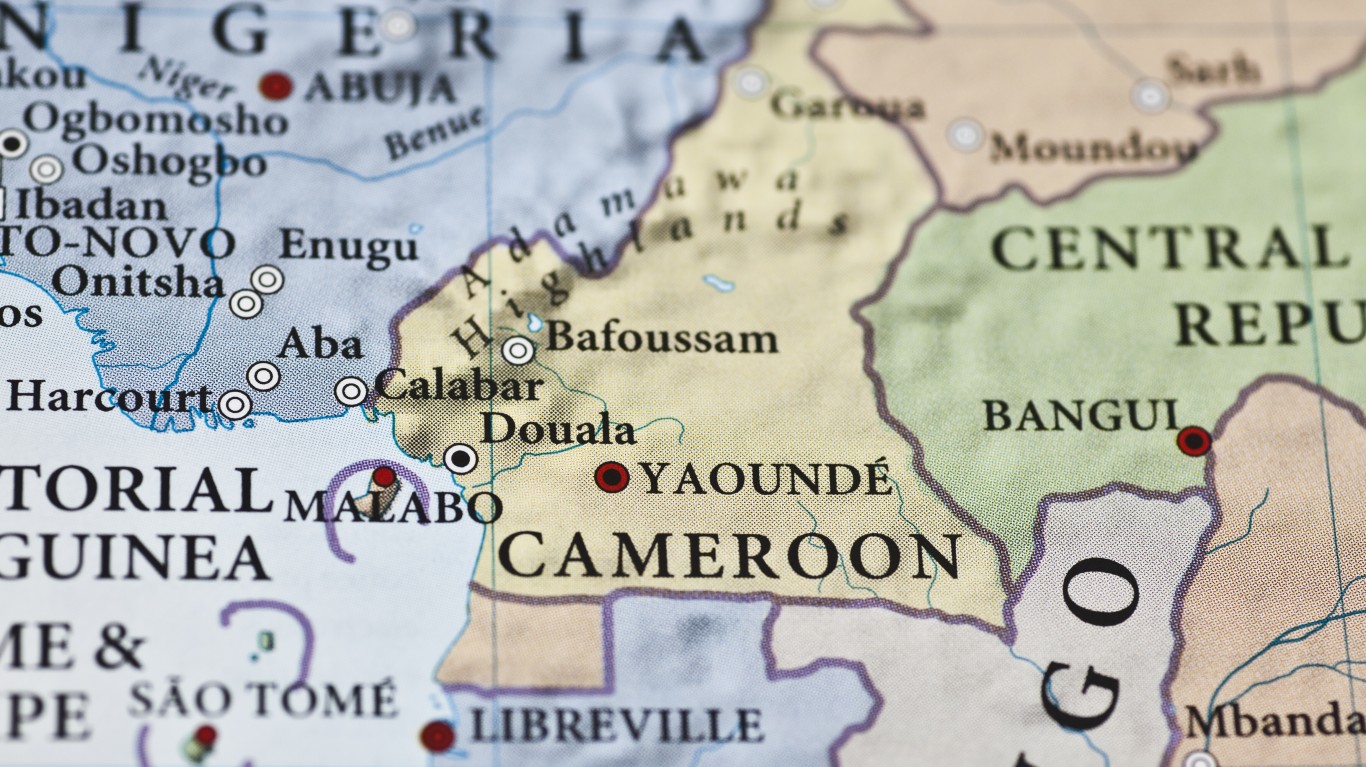
14. Mertens’ Smalltongue Toad
> Estimated remaining population: Unknown (decreasing)
> Main habitat/geography: Cameroon
> Scientific name: Werneria mertensiana
The merten’s smalltongue toad habitat type is forests, rocky areas such as mountain peaks, and wetlands. The species is threatened by agricultural encroachment and human settlement, which have reduced their natural habitat, according to the IUCN. Chytridiomycosis, a disease caused by a fungus, may also be a factor in the reduction of the species.

Here’s what you can do about it
The IUCN recommends captive breeding for the toad as well as protection of higher elevation forest habitats in western Cameroon.
[in-text-ad]
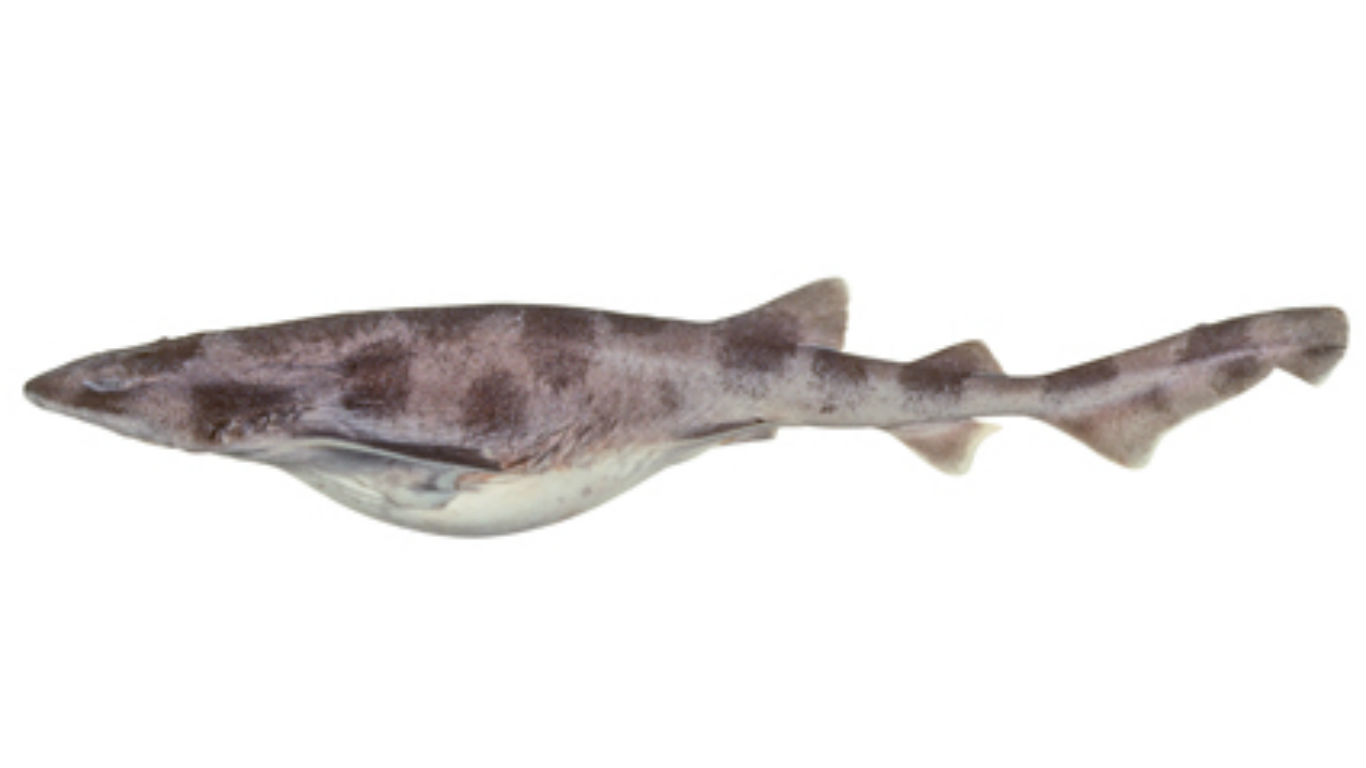
15. Whitefin Swellshark
> Estimated remaining population: Unknown (decreasing)
> Main habitat/geography: Australia
> Scientific name: Cephaloscyllium albipinnum
The whitefin swellshark, found in Australia, is on the brink of extinction. Its status has changed this year to critically endangered. Humans hunt the whitefin swellshark for their fins.
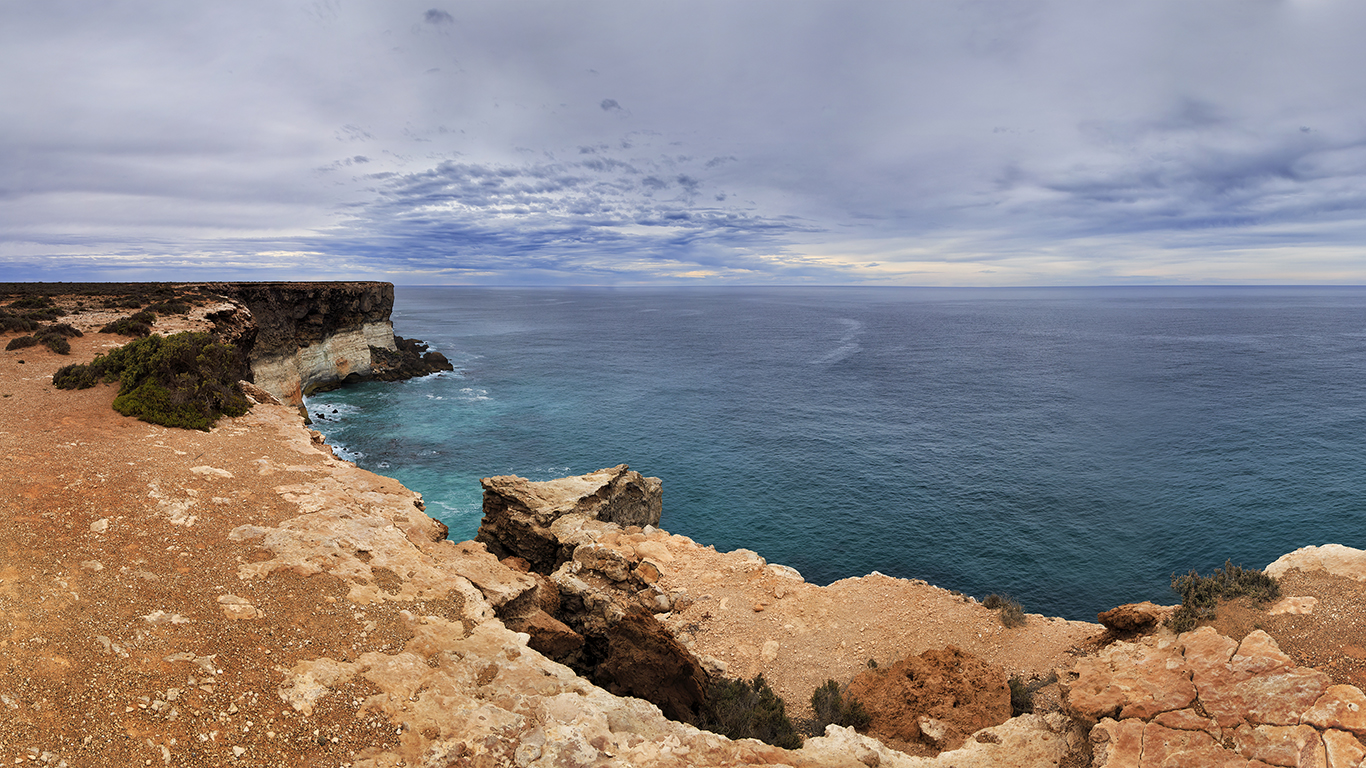
Here’s what you can do about it
There are general efforts in Australia to preserve shark populations, but there are no specific actions to protect the whitefin swellshark species. Those concerned about the future of the whitefin swellshark can write to the Humane Society International and the Australian Marine Conservation Society conservation groups to find out more about this shark.

16. Malayan Tiger
> Estimated remaining population: 80-120 (decreasing)
> Main habitat/geography: Malay Peninsula and Thailand
> Scientific name: Panthera tigris ssp. Jacksoni.
Protecting the beautiful Malayan tiger’s habitat helps shield other species such as Asian elephants and mainland clouded leopards. Tigers are threatened by habitat loss and conversion of forests to farms.
[in-text-ad-2]
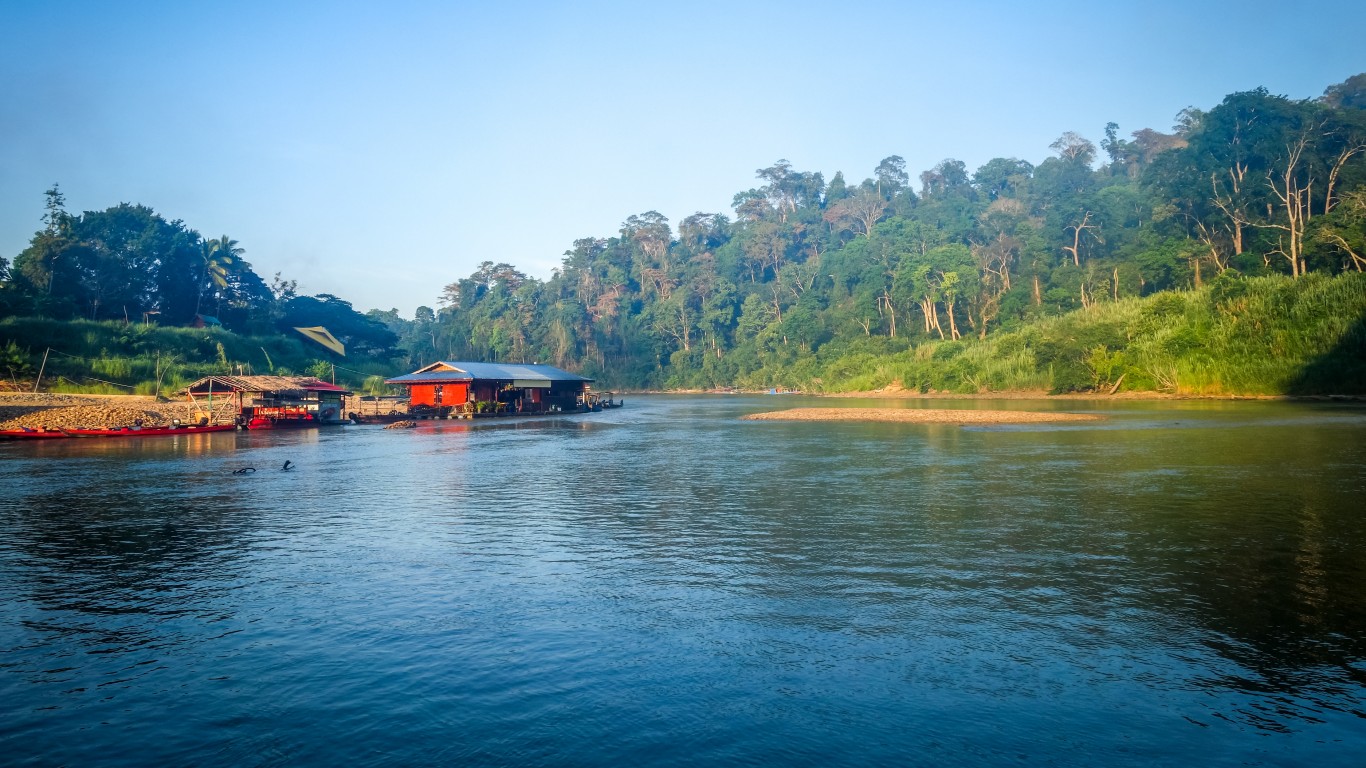
Here’s what you can do about it
The World Wildlife Fund is leading an effort to reduce tiger-human encounters by advocating better livestock management. The WWF urges people to write to members of Congress to ensure laws are enforced to protect tigers from illegal wildlife trade.

17. Mountain Gorilla
> Estimated remaining population: 600 (decreasing)
> Main habitat/geography: Congo, Rwanda, and Uganda
> Scientific name: Gorilla beringei beringei.
Mountain gorillas live in forests at elevations of up to 13,000 feet. The animals have thicker fur, and more of it, compared with other great apes. Conservation efforts have improved the outlook for mountain gorillas, who have been under threat from human encroachment, farming and expansion of livestock, as well as poaching.
[in-text-ad]

Here’s what you can do about it
People are urged to help protect the gorillas by becoming involved in the WWF’s action center.
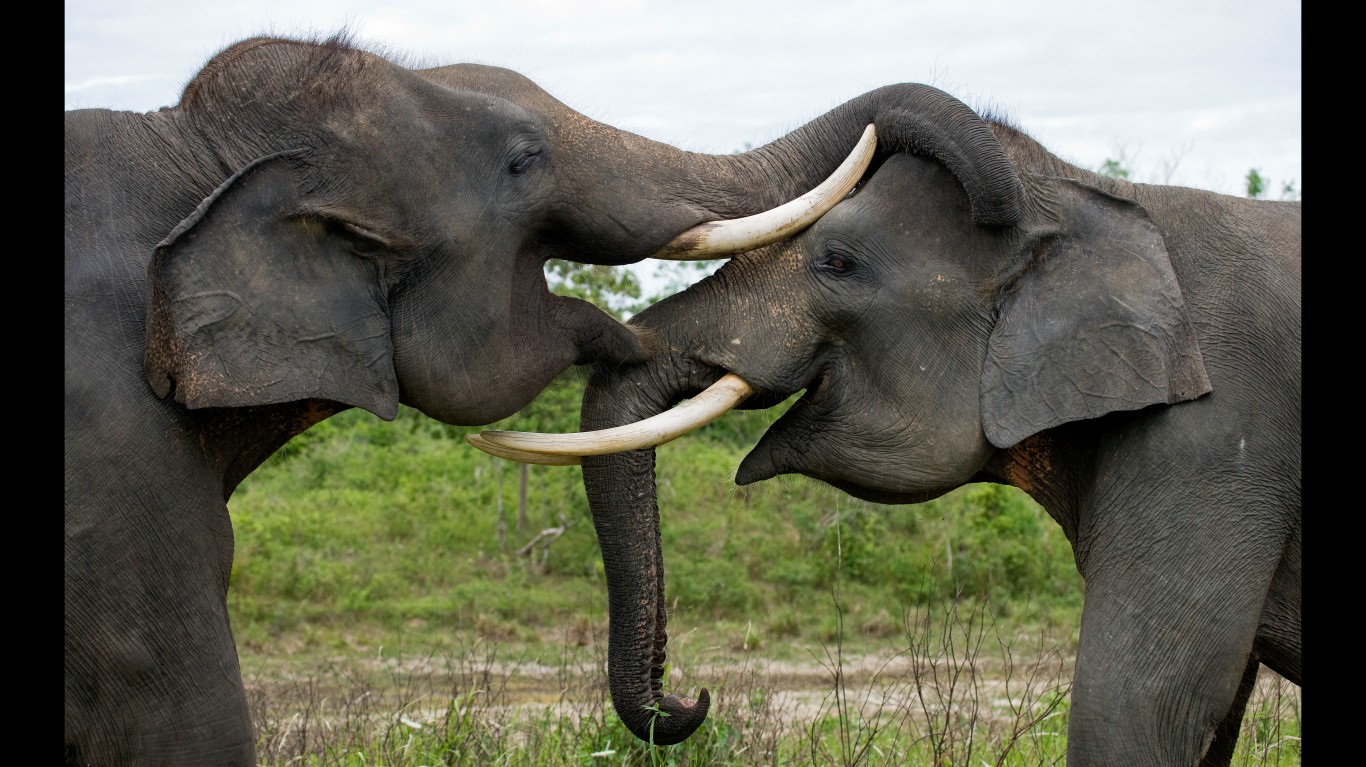
18. Sumatran Elephant
> Estimated remaining population: 2,400-2,800 (decreasing)
> Main habitat/geography: Borneo and Sumatra
> Scientific name: Elephas maximus sumatranus
Sumatran elephants play a key role in the ecosystem, helping to create a healthy forest with a variety of plants by depositing seeds wherever they go. They are under threat from deforestation poaching. The Sumatran elephant’s numbers have fallen by 80% in fewer than 25 years.

Here’s what you can do about it
People can sign a petition on the WWF website to stop wildlife crime. They can also symbolically adopt an elephant by making a donation on the WWF website.
[in-text-ad-2]
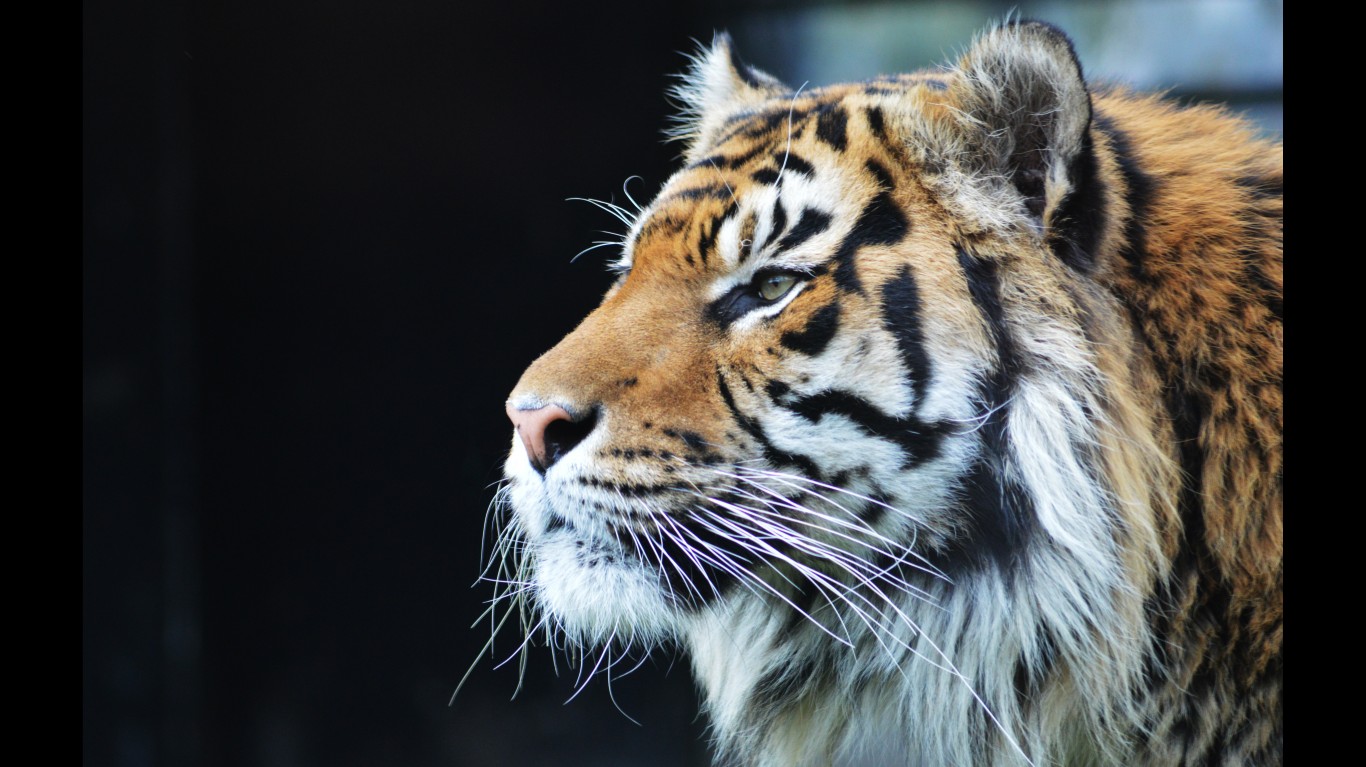
19. Sumatran Tiger
> Conservation status: 400-500 (decreasing)
> Geographic region: Sumatra
>Scientific name: Panthera tigris sumatrae
Sumatran tigers are the smallest tiger subspecies. The last of these animals inhabit forests sections of forests on Sumatra. Aggressive conservation efforts have been made to preserve these animals. However, poaching and deforestation remain threats to the Sumatran tiger.

Here’s what you can do about it
People can help support programs to save the tiger by buying vanishing species stamps as well as making a donation by symbolically adopting a tiger.
[in-text-ad]
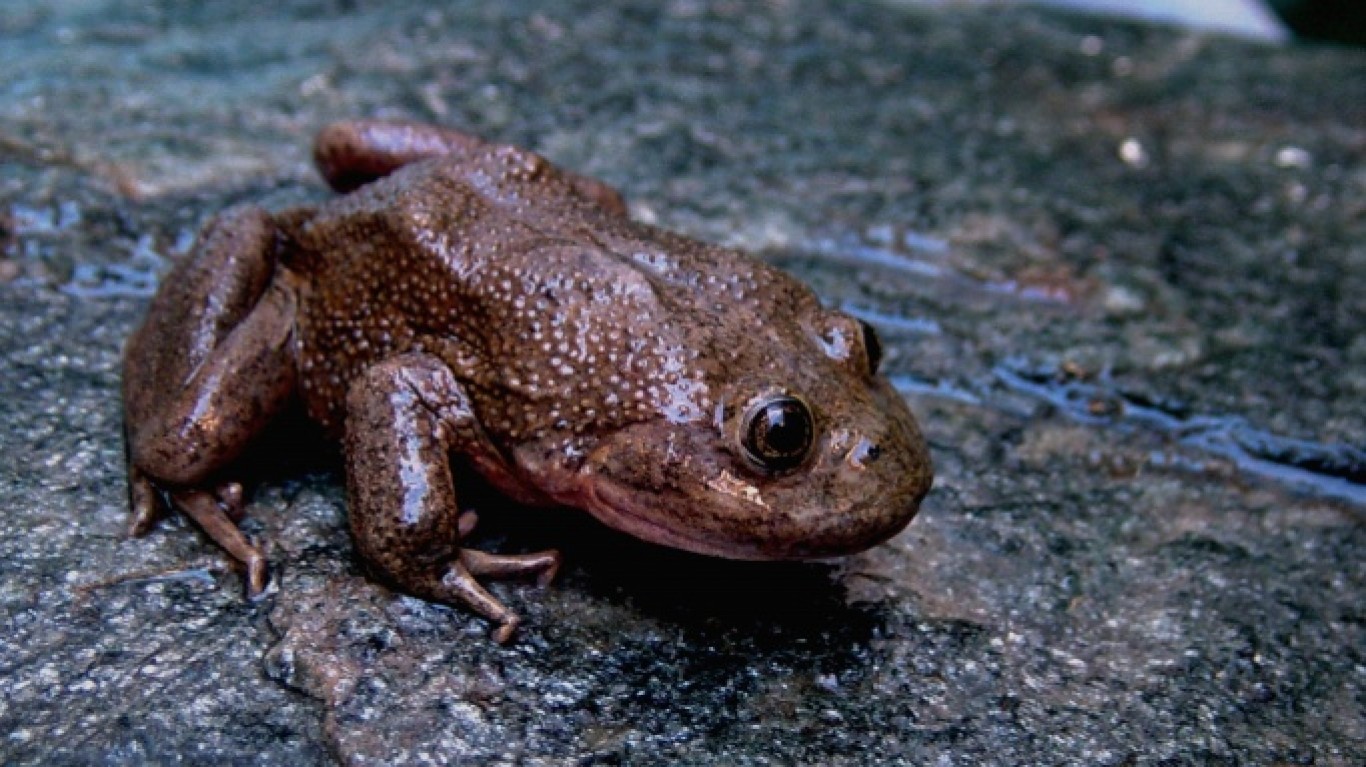
20. Telmatobius fronteriensis
> Estimated remaining population: 50-249 (decreasing)
> Main habitat/geography: Chile, Bolivia
> Scientific name: Telmatobius fronteriensis
The IUCN does not list a common name for the critically endangered telmatobius fronteriensis, an amphibian species found in rivers, freshwater marshes, and wetlands in the South American countries of Chile and Bolivia. Extraction of surface water, already scarce in the region, is a threat to the species’ habitat. A large copper mining company operates near where the species are found. Sulfur mining has been a significant threat to the species in the past.

Here’s what you can do about it
Petition or appeal to the governments of Chile and Bolivia to restrain mining activities in those areas.
Finding a qualified financial advisor doesn’t have to be hard. SmartAsset’s free tool matches you with up to 3 fiduciary financial advisors in your area in 5 minutes. Each advisor has been vetted by SmartAsset and is held to a fiduciary standard to act in your best interests. If you’re ready to be matched with local advisors that can help you achieve your financial goals, get started now.
Thank you for reading! Have some feedback for us?
Contact the 24/7 Wall St. editorial team.